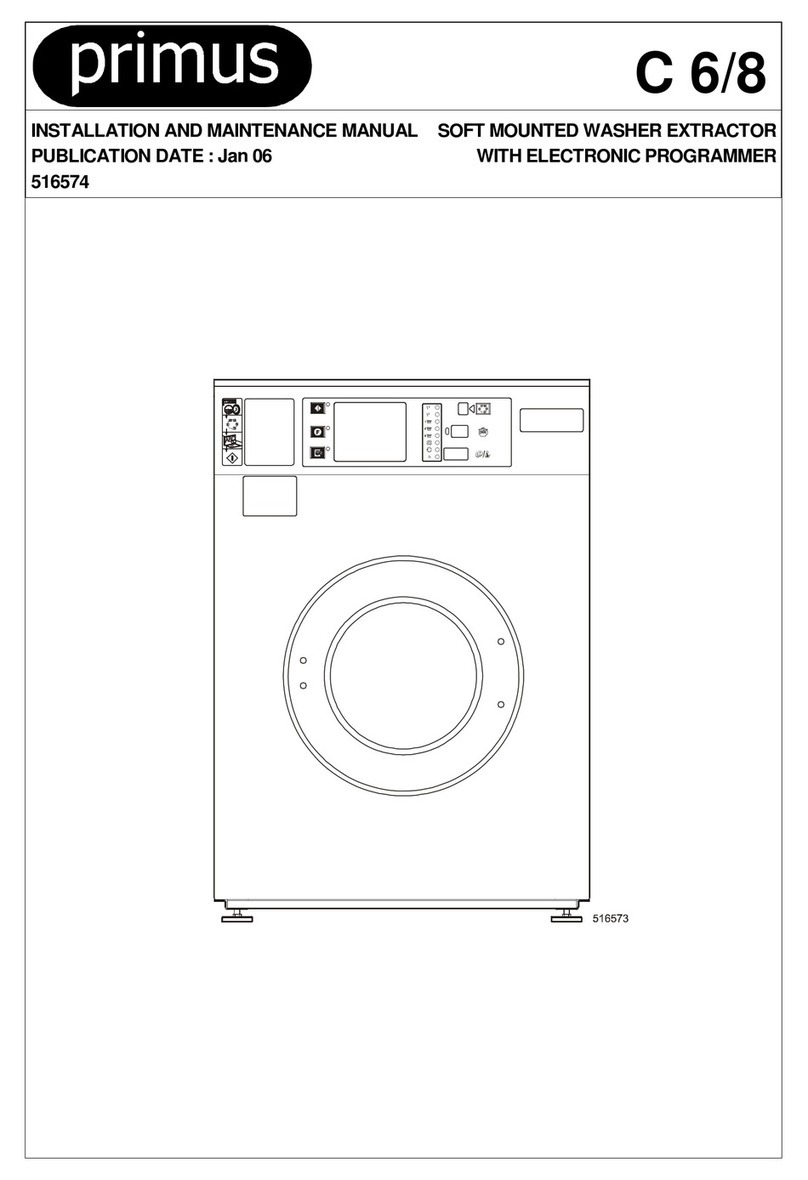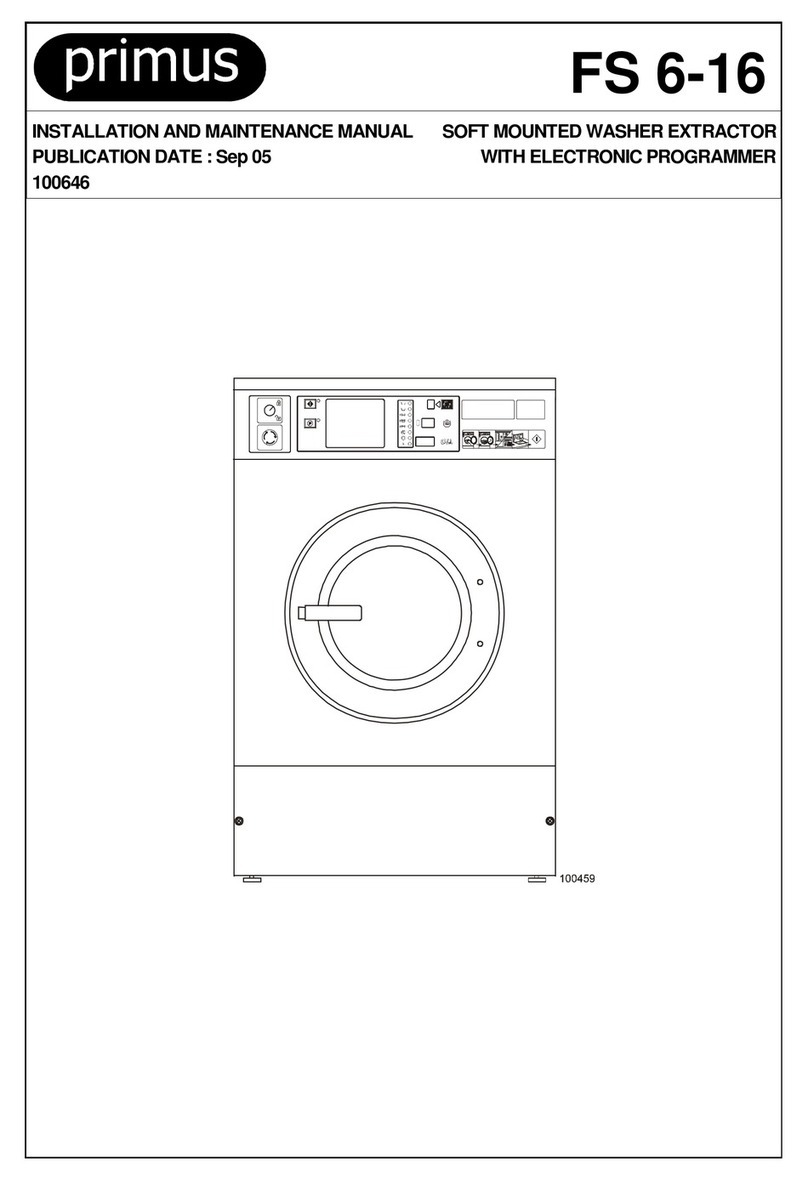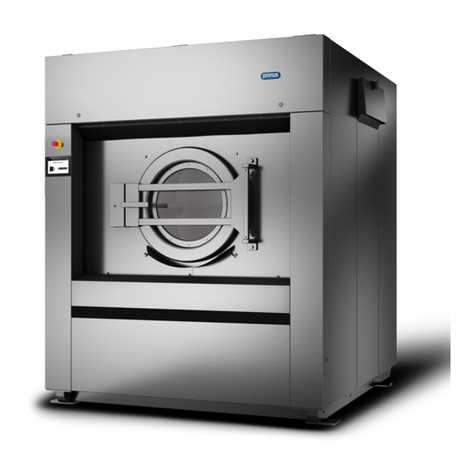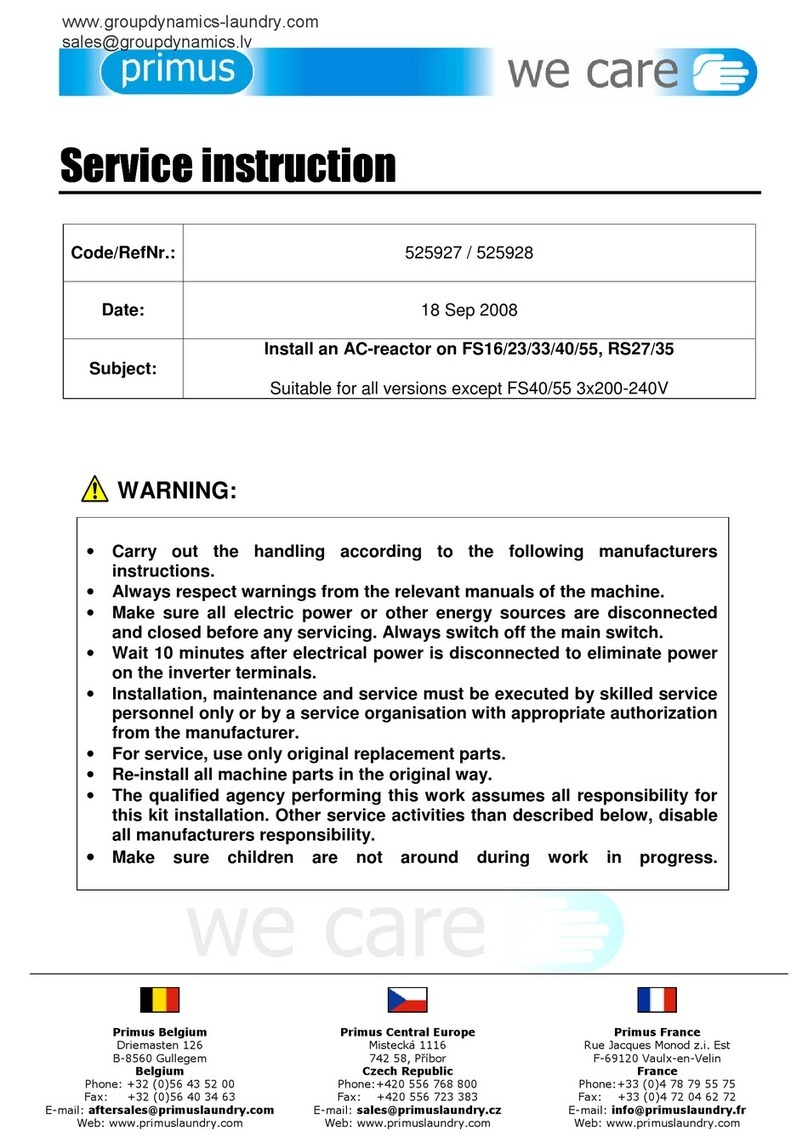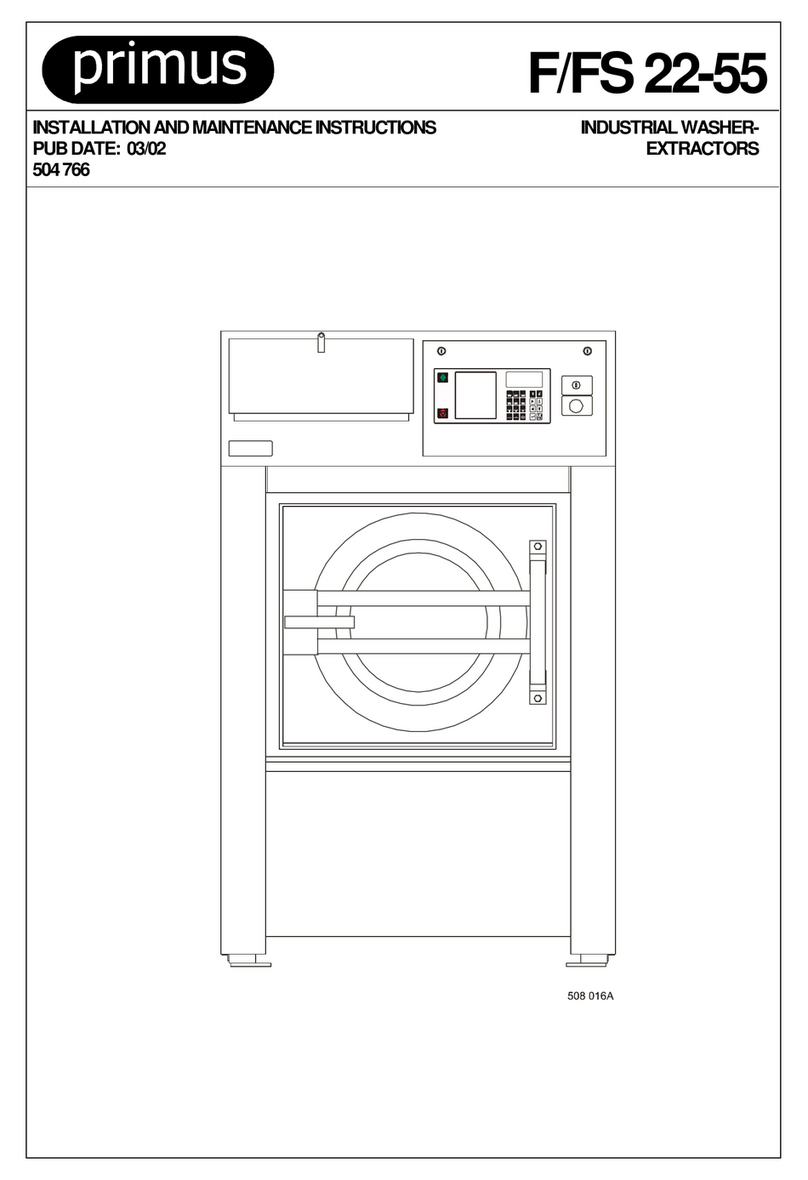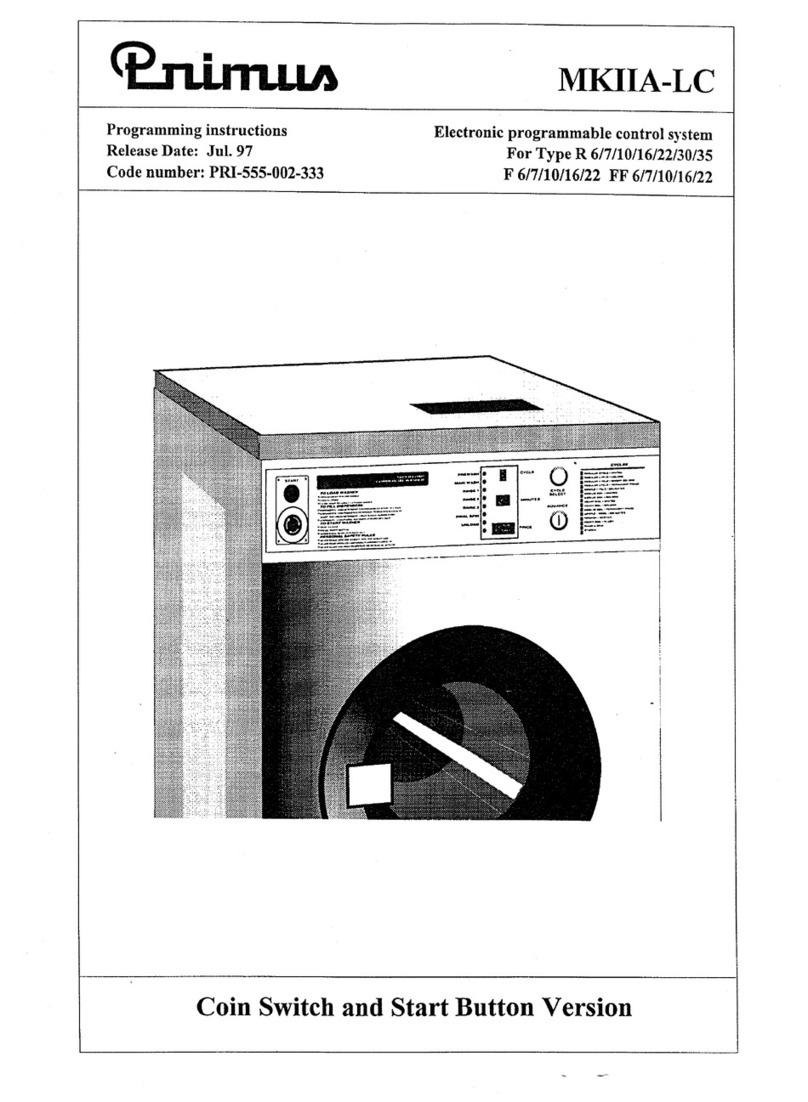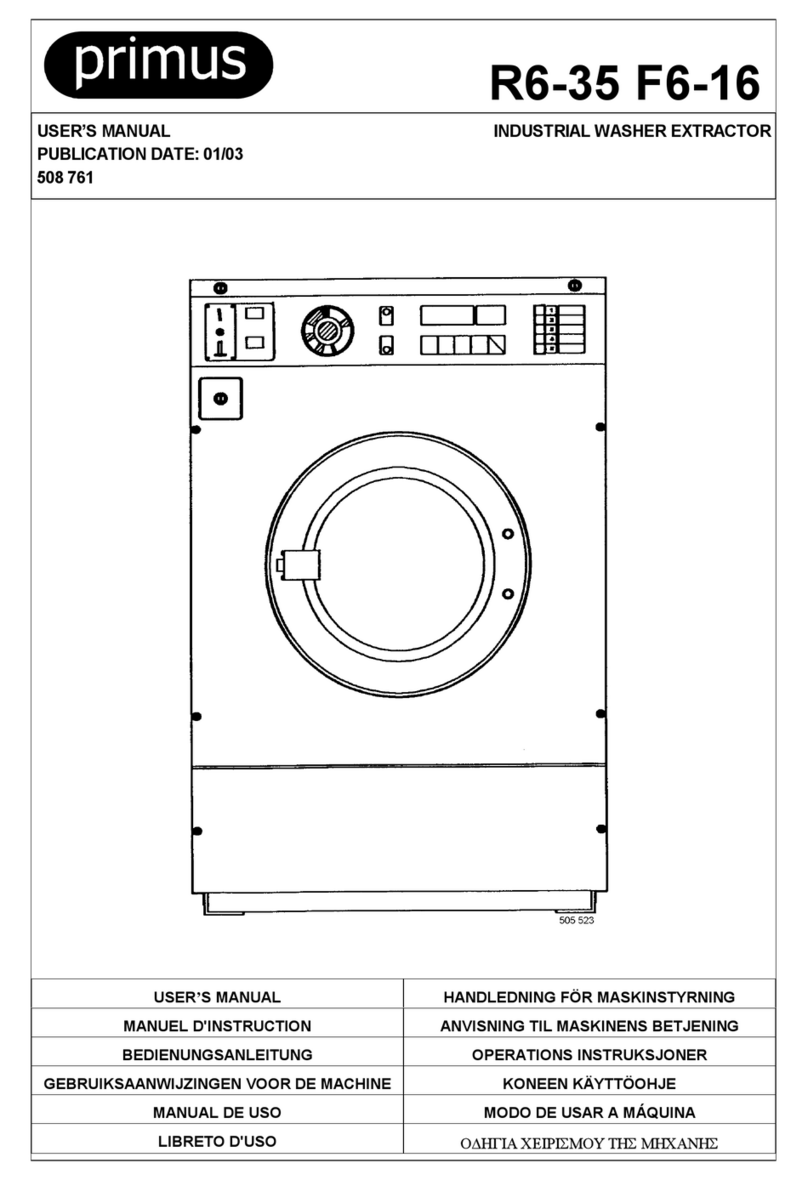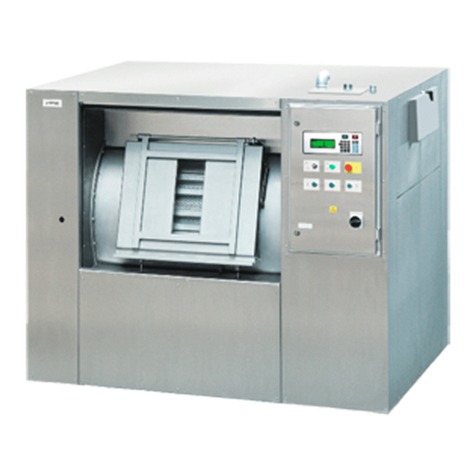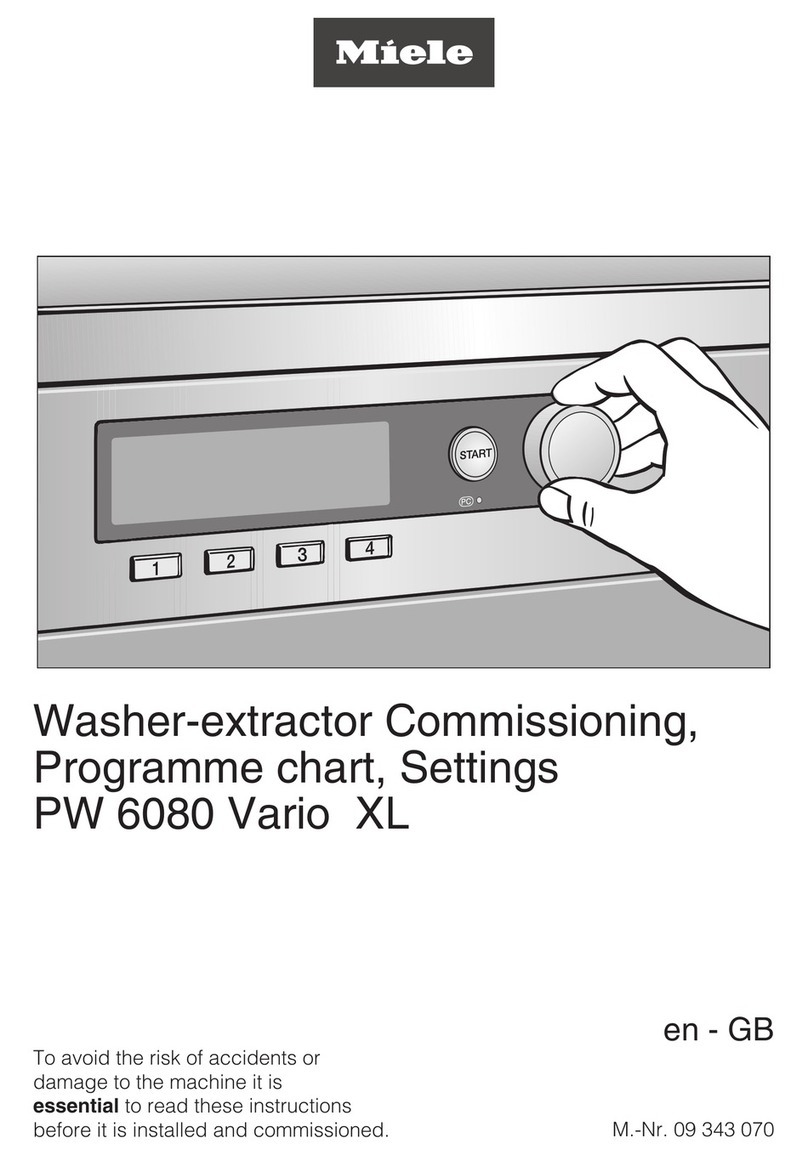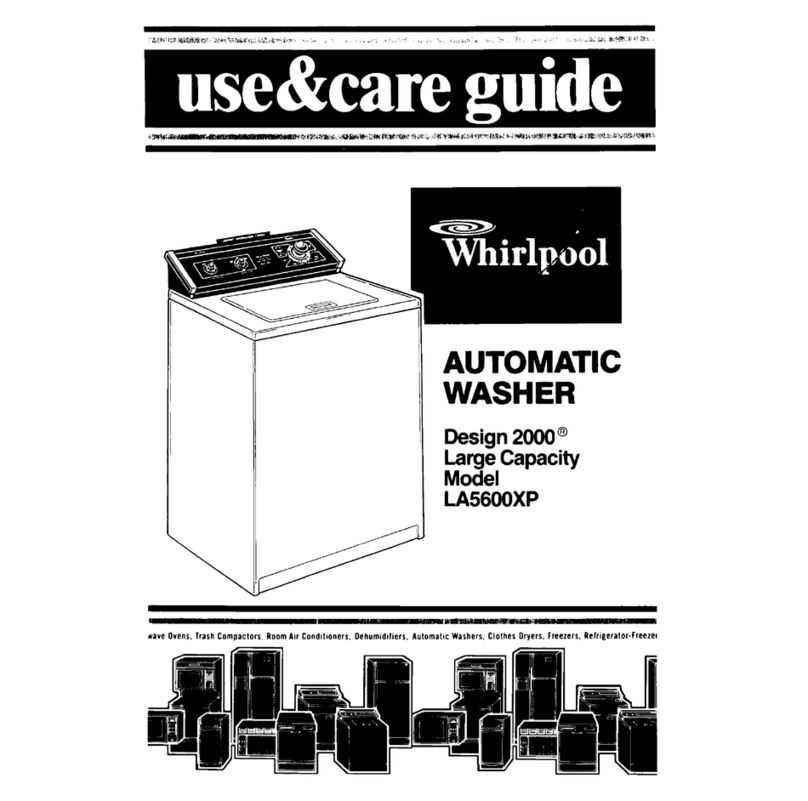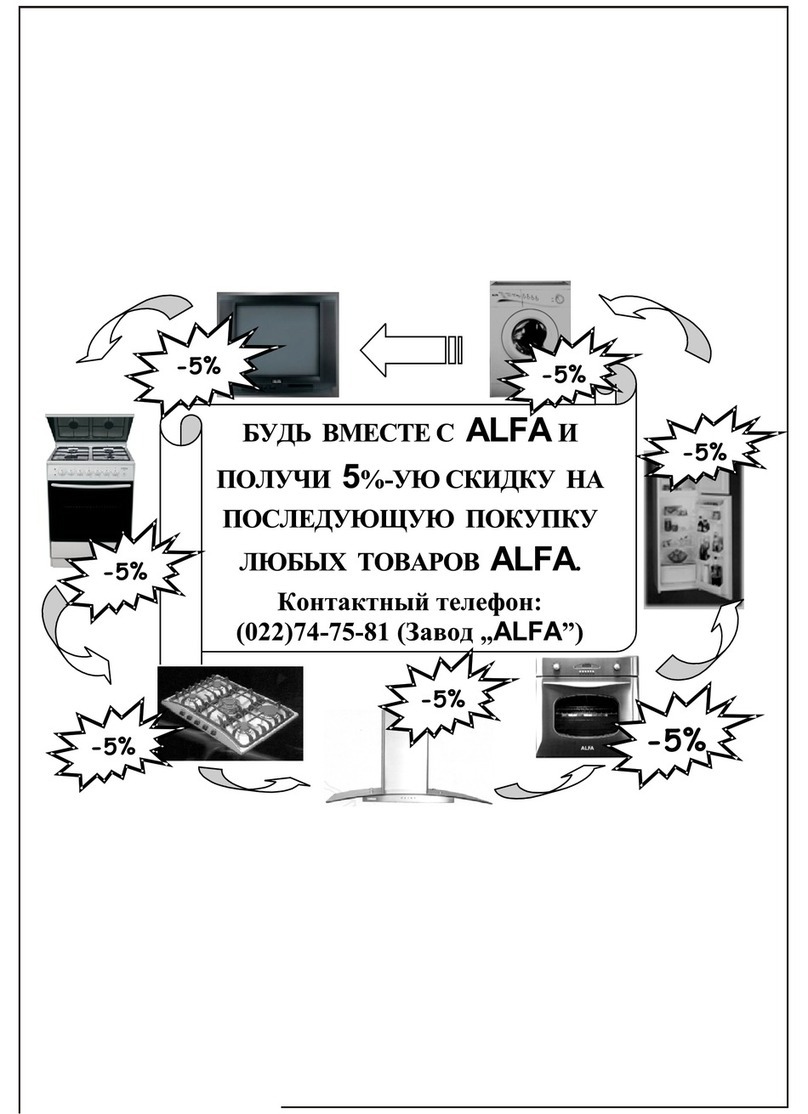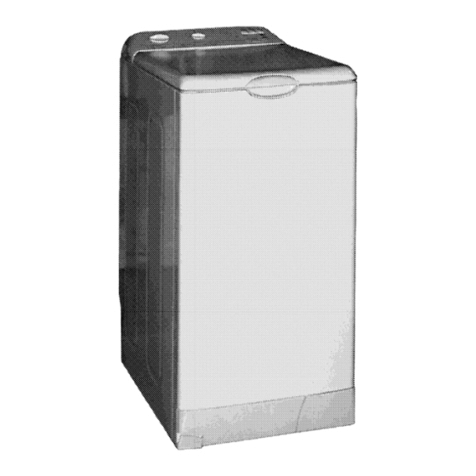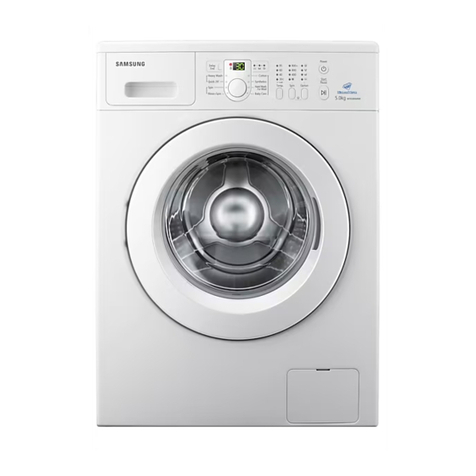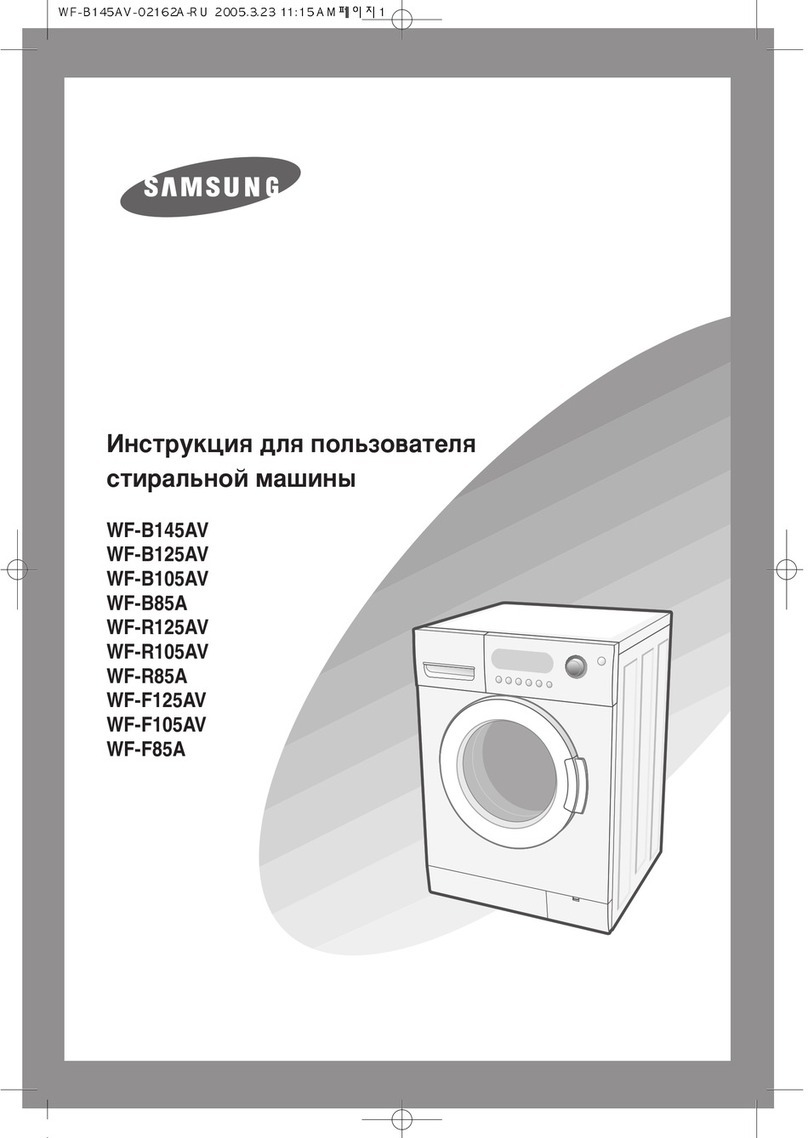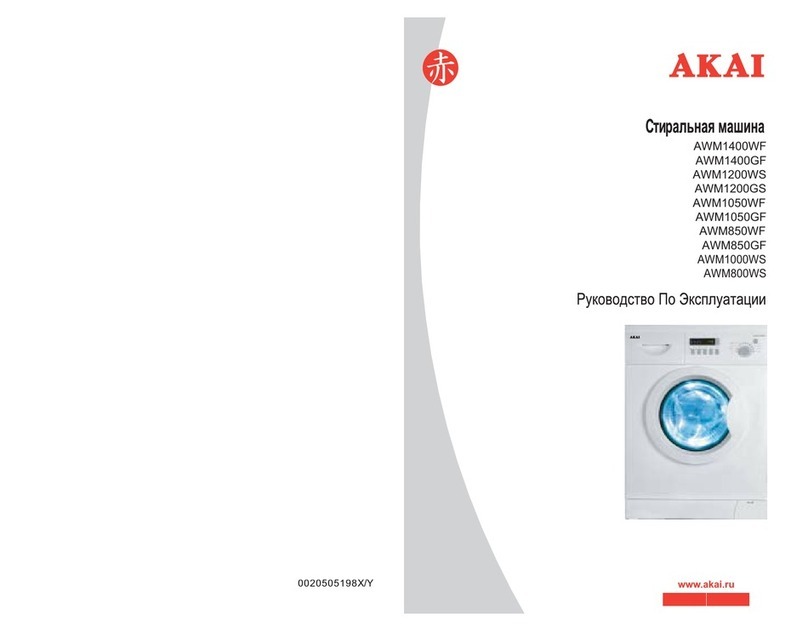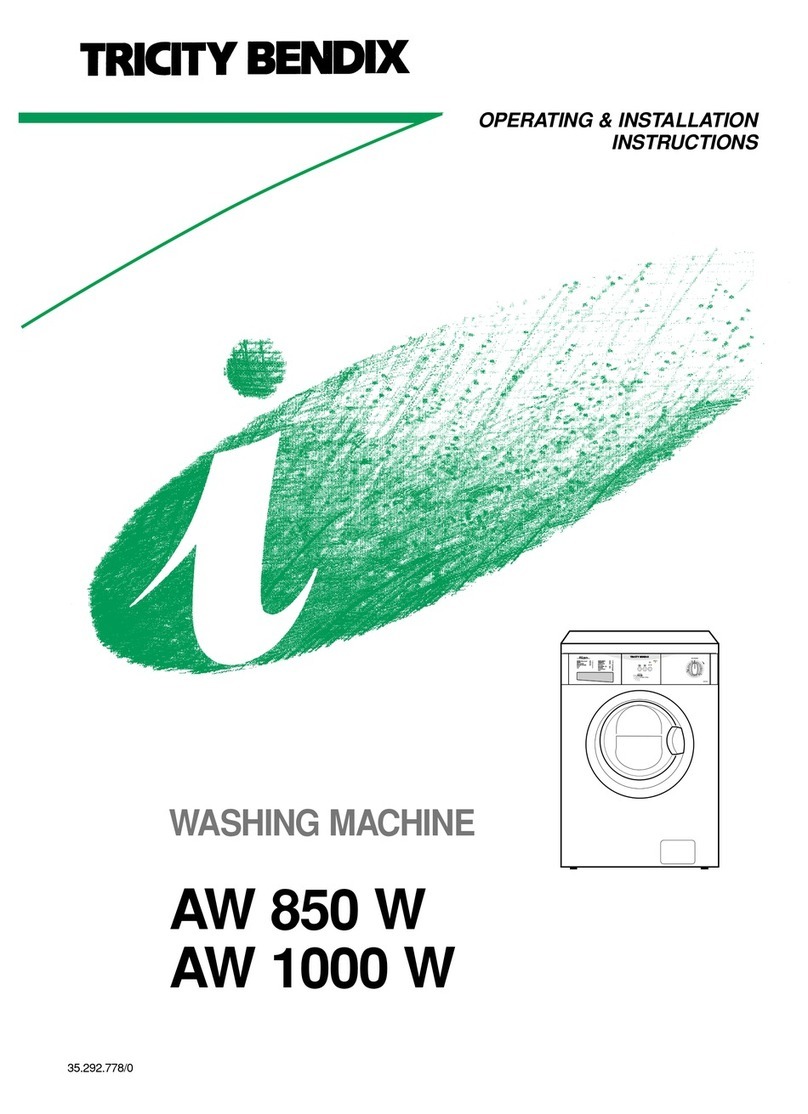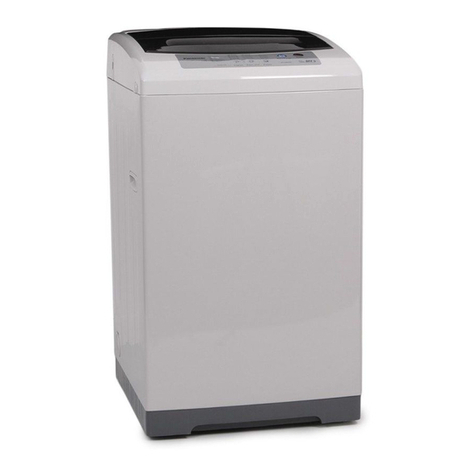3
GENERAL
• Read and keep this manual!
• Any electrical work or plumbing must be car-
ried out by qualified tradesmen.
• Remove the transit screws before you use the
machine, see Mechanical installation.
CHILD LOCK ON BUTTON
To prevent accidental button pushes on the
button you can activate the child lock
function. The button then must be held
in for three seconds to activate the machine.
DOOR
The door is opened electrically, so it cannot be
opened until the machine is connected to the
electrical supply! The door can however be ope-
ned in an emergency, see Troubleshooting.
OVERFILL CUT-OUT
If the water level in the machine rises above
normal the overfill cut-out shuts off the water
intake and starts pumping out the water. The
programme resumes when the water level has
dropped.
PACKAGING
Recycle the packaging according to recommen-
dations in your area.
TRANSPORT/WINTER STORAGE
If you intend to transport the machine or store
it over winter in unheated premises, empty the
trap and the drain pump, see the chapter on
Maintenance.
Any questions? Call service.
SCRAPPING
At the end of its life the machine must be disa-
bled before being scrapped.
Contact your local recycling centre to find
out where to dispose of it or recycle it.
The machine has been built and marked to
facilitate recycling.
SAFETY
SAFETY WASHING MACHINE
